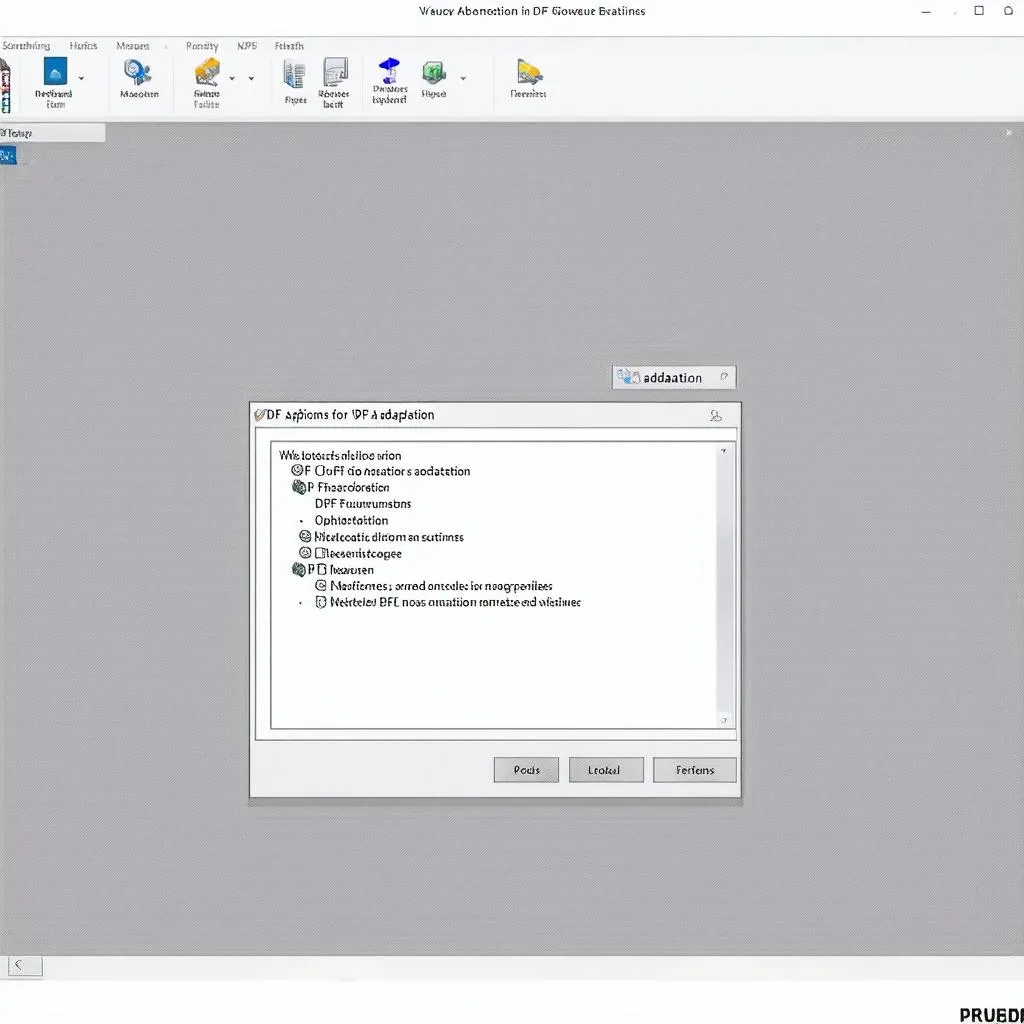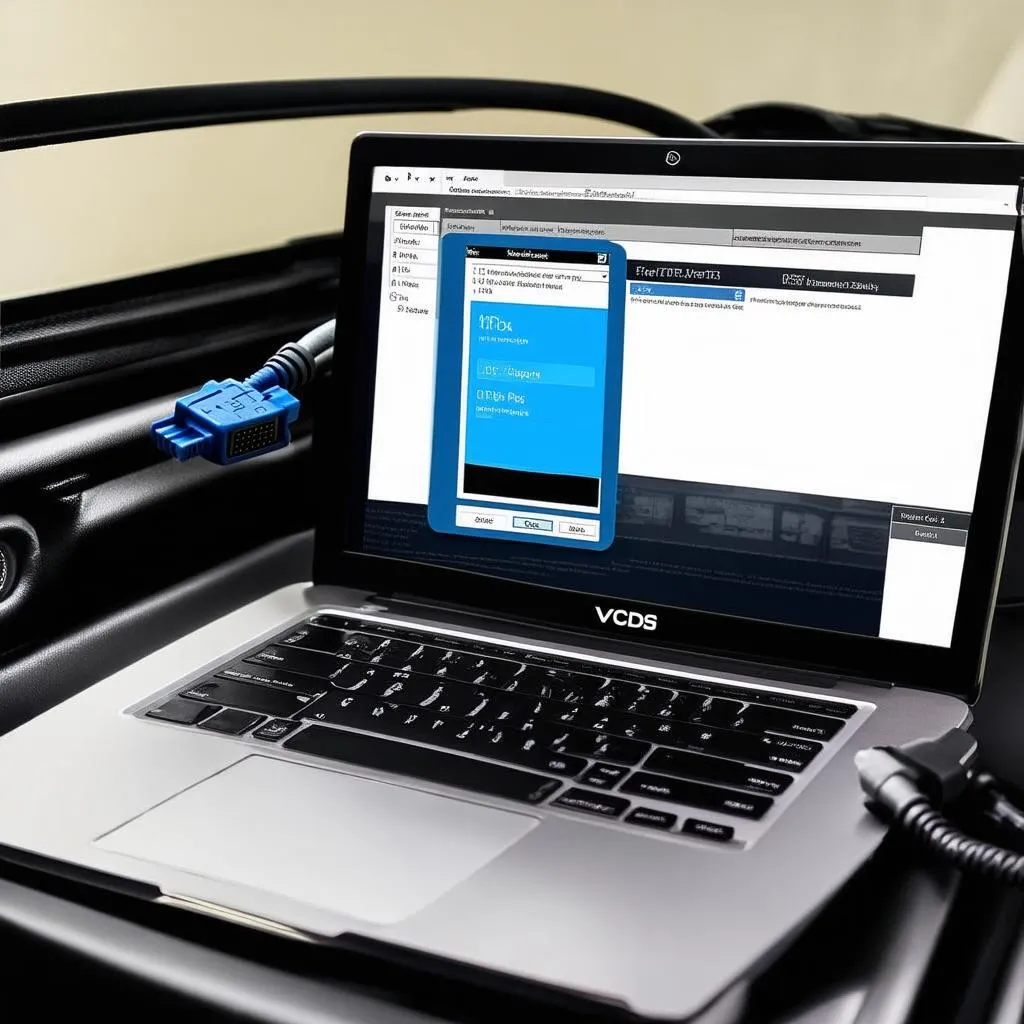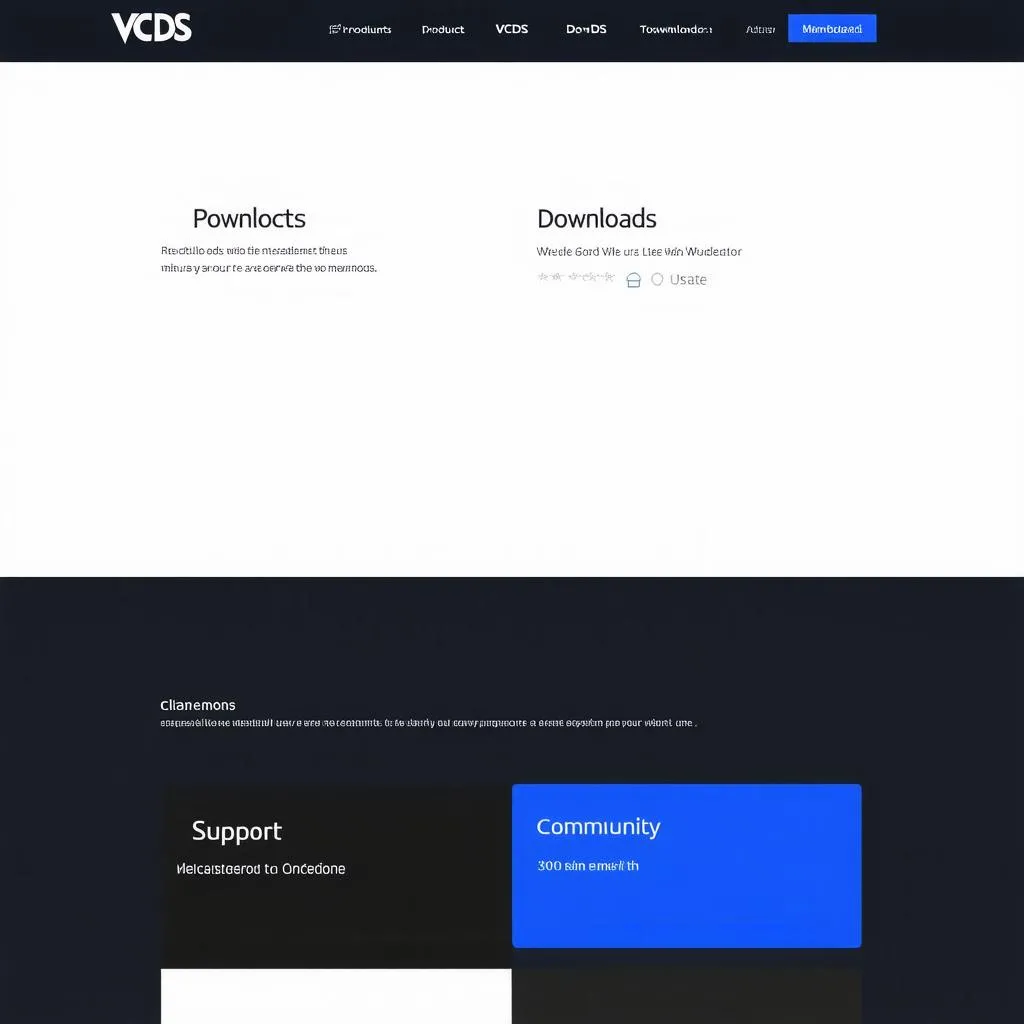Diesel Particulate Filters (DPF) are essential components of modern diesel engines, designed to trap harmful soot particles from exhaust gases. However, over time, DPFs can become clogged, impacting engine performance. This is where VCDS DPF adaptation comes into play. In this comprehensive guide, we delve into the intricacies of VCDS DPF adaptation, addressing common questions and concerns faced by automotive technicians.
Understanding VCDS DPF Adaptation
VCDS, short for VAG Communication Diagnostic System, is a powerful diagnostic software used by mechanics to communicate with Volkswagen Group vehicles (VW, Audi, Seat, Skoda). One of its many functions is the DPF adaptation, a procedure crucial for maintaining optimal DPF functionality.
What is VCDS DPF Adaptation?
Simply put, VCDS DPF adaptation is a software procedure that resets the DPF soot load calculation in the engine control unit (ECU) after a DPF regeneration or replacement.
Imagine your car’s DPF as a filter in a coffee machine. Over time, coffee grounds accumulate, hindering water flow. Similarly, soot buildup in a DPF restricts exhaust flow, affecting engine performance. A DPF regeneration is like cleaning the coffee filter, and the VCDS adaptation is like telling the coffee machine that the filter is clean.
Why is VCDS DPF Adaptation Important?
Without proper DPF adaptation, the ECU might still “think” the DPF is clogged even after cleaning or replacement. This can lead to:
- Reduced engine performance: The ECU might limit engine power to prevent damage from a perceived clogged DPF.
- Increased fuel consumption: The engine might burn more fuel to compensate for the assumed restriction.
- Frequent regeneration attempts: The ECU might initiate more frequent (and potentially unnecessary) DPF regenerations, leading to increased wear and tear.
Performing a VCDS DPF Adaptation
Note: This guide provides a general overview. Always refer to the specific manufacturer instructions for your vehicle model.
Requirements:
- A laptop with VCDS software installed
- A compatible VCDS interface cable
Steps:
- Connect VCDS: Connect the interface cable to your laptop and the vehicle’s OBD-II port.
- Launch VCDS: Turn on the vehicle’s ignition. Open the VCDS software on your laptop.
- Select Control Module: Choose “Select Control Module” and navigate to the engine control module (usually labeled as [Engine]).
- Basic Settings: Go to “Basic Settings” and select the “DPF Regeneration” option.
- Initiate Adaptation: Follow the on-screen prompts to start the adaptation procedure.
- Monitor Progress: VCDS will display the progress of the adaptation. Do not interrupt the process.
- Confirmation: Once complete, VCDS will confirm the successful adaptation.
 VCDS software screenshot
VCDS software screenshot
Common VCDS DPF Adaptation Issues
While generally straightforward, you might encounter issues during the adaptation process. Here are some common problems and potential solutions:
- Adaptation Not Accepted: This could be due to underlying DPF issues or incorrect operating conditions. Check for fault codes, ensure the DPF is not excessively clogged, and verify the vehicle meets the required parameters (e.g., engine temperature, fuel level).
- Communication Errors: Ensure a stable connection between your laptop, the interface cable, and the vehicle.
- Software Issues: Outdated VCDS software can cause problems. Always use the latest version.
FAQs About VCDS DPF Adaptation
Q: How often should I perform a DPF adaptation?
A: Typically, a DPF adaptation is necessary after a DPF regeneration or replacement. Consult your vehicle’s service manual for specific recommendations.
Q: Can I drive my car immediately after a VCDS DPF adaptation?
A: Yes, you can drive normally after a successful adaptation.
Q: Is VCDS DPF adaptation the same as a DPF regeneration?
A: No, they are different procedures. Regeneration cleans the DPF, while adaptation updates the ECU with the DPF’s current condition.
Cardiagtech: Your Resource for Automotive Diagnostics
DPF adaptation is just one of the many functions offered by powerful diagnostic tools like VCDS. At CARDIAGTECH, we provide a wide range of automotive diagnostic products and resources to help you stay ahead in the industry.
For more information on VCDS procedures, check out our VCDS Procedures page.
Need help with VCDS DPF Adaptation or other diagnostic procedures? Contact Cardiagtech today! Our team of experts is ready to assist you.


